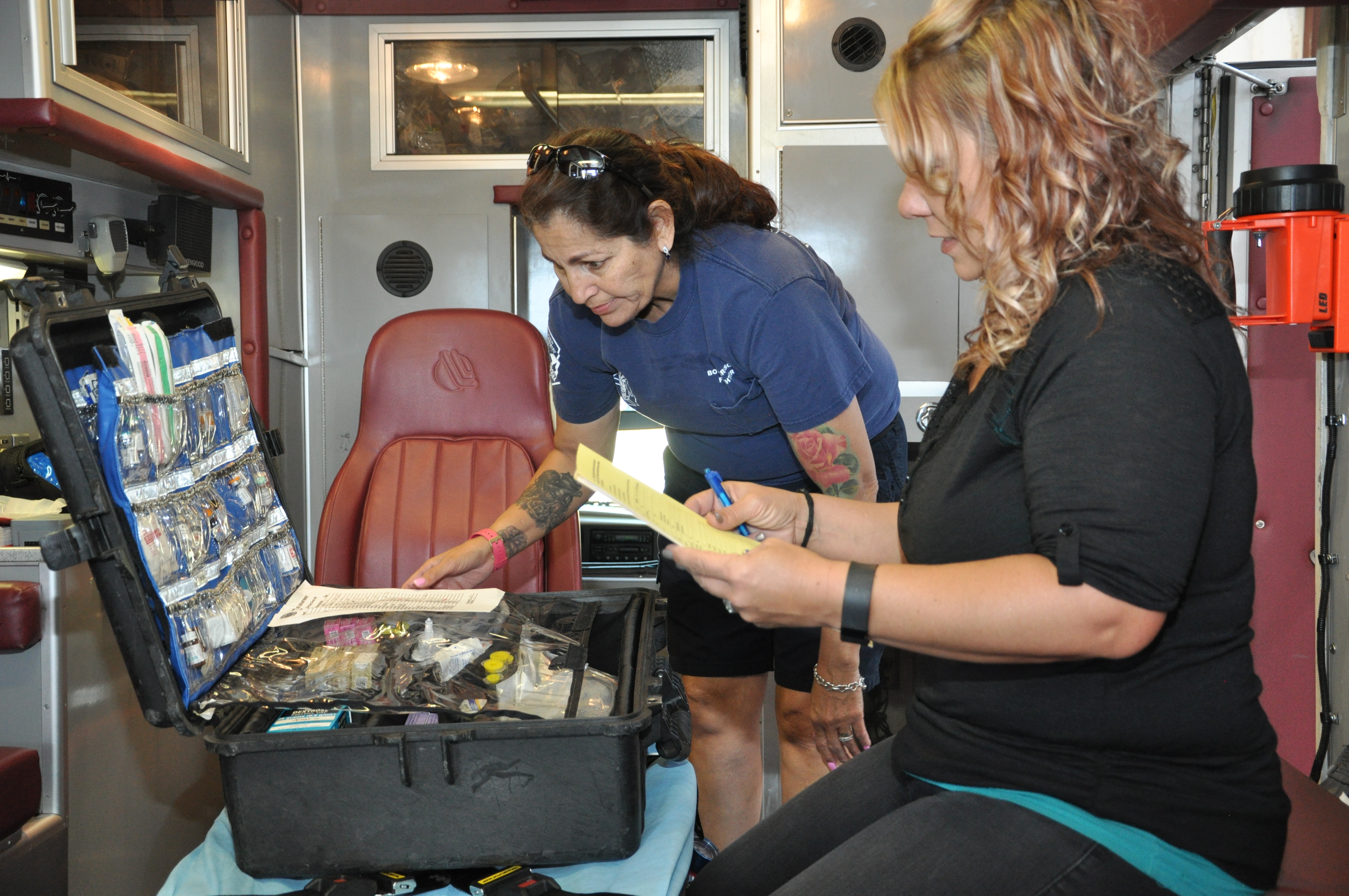 Emergency medical service (EMS) workers, like paramedics and emergency medical technicians (EMT), run toward dangerous and chaotic situations to treat the sick, injured and dying. In addition to training and experience, EMS workers rely on medical equipment, medicine, and their vehicles to save lives when every second counts. To highlight EMS Week, we’re putting a spotlight on our team in the Bureau of Emergency Medical Services and Trauma System, which inspects every ambulance statewide every year.
Emergency medical service (EMS) workers, like paramedics and emergency medical technicians (EMT), run toward dangerous and chaotic situations to treat the sick, injured and dying. In addition to training and experience, EMS workers rely on medical equipment, medicine, and their vehicles to save lives when every second counts. To highlight EMS Week, we’re putting a spotlight on our team in the Bureau of Emergency Medical Services and Trauma System, which inspects every ambulance statewide every year.
We have three EMS Regional Coordinators who register and inspect more than 1,000 ambulances statewide annually ranging from the traditional vans to helicopters and fixed-wing aircraft. The inspectors, all experienced EMS workers themselves, check three main areas that include medications, medical equipment, and the transport vehicle itself.
While every ambulance crew is responsible to follow an equipment and supply checklist before each shift, the ADHS inspectors check to see if all medical supplies are present, that they are not expired or been tampered with and that they are properly secured. They also verify that the necessary medical equipment is onboard and in good condition.
The vehicle is given a review as well with the inspection team checking the radio, sirens, lights, tire-tread, under-the-hood, and overall condition. Beyond the legal standards, all three inspectors agree that they put each ambulance through the EMS inspection which is as follows: “It only passes if I’d allow it to transport my mother.”
Just about every inspection will discover something that needs to be addressed. Safety issues are deemed major and will take the unit out of service. Minor issues that are not life-threatening or critical can be fixed within 15-days. The inspection is often the only time that the local EMS field crews interact directly with an ADHS representative. The team uses this time as a teaching opportunity to discuss the how/why of what is being inspected as well as pass along news and updates from state or regional meetings.
The sense of pride and community that EMS workers share is evident by the excellent care they provide. Our team’s behind-the-scenes work is designed to support that excellent care by ensuring that the equipment, vehicle, and medications are all in proper operating order. Next time you see an ambulance; remember that our inspectors checked it out ensuring that it’s ready to continue saving lives.











